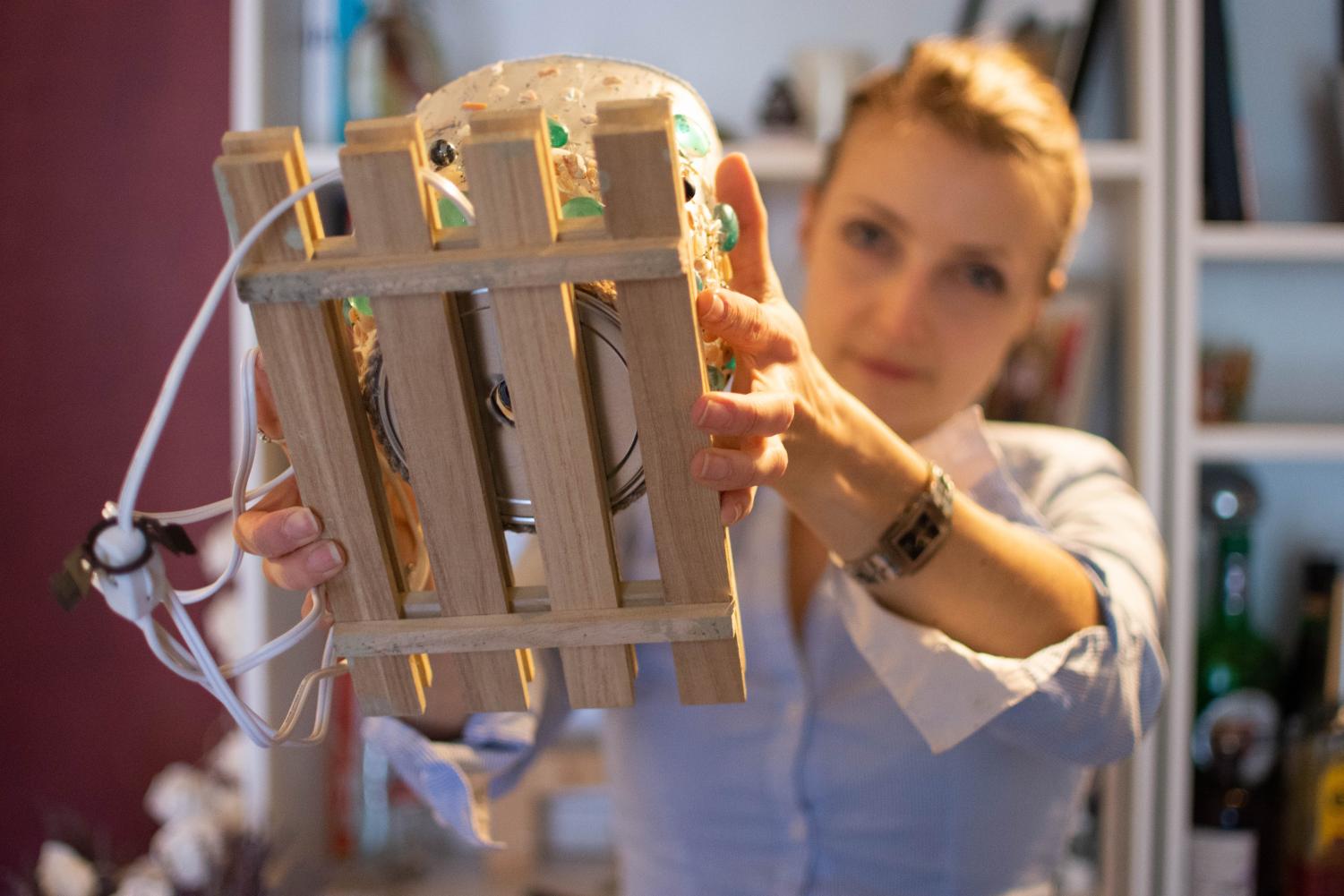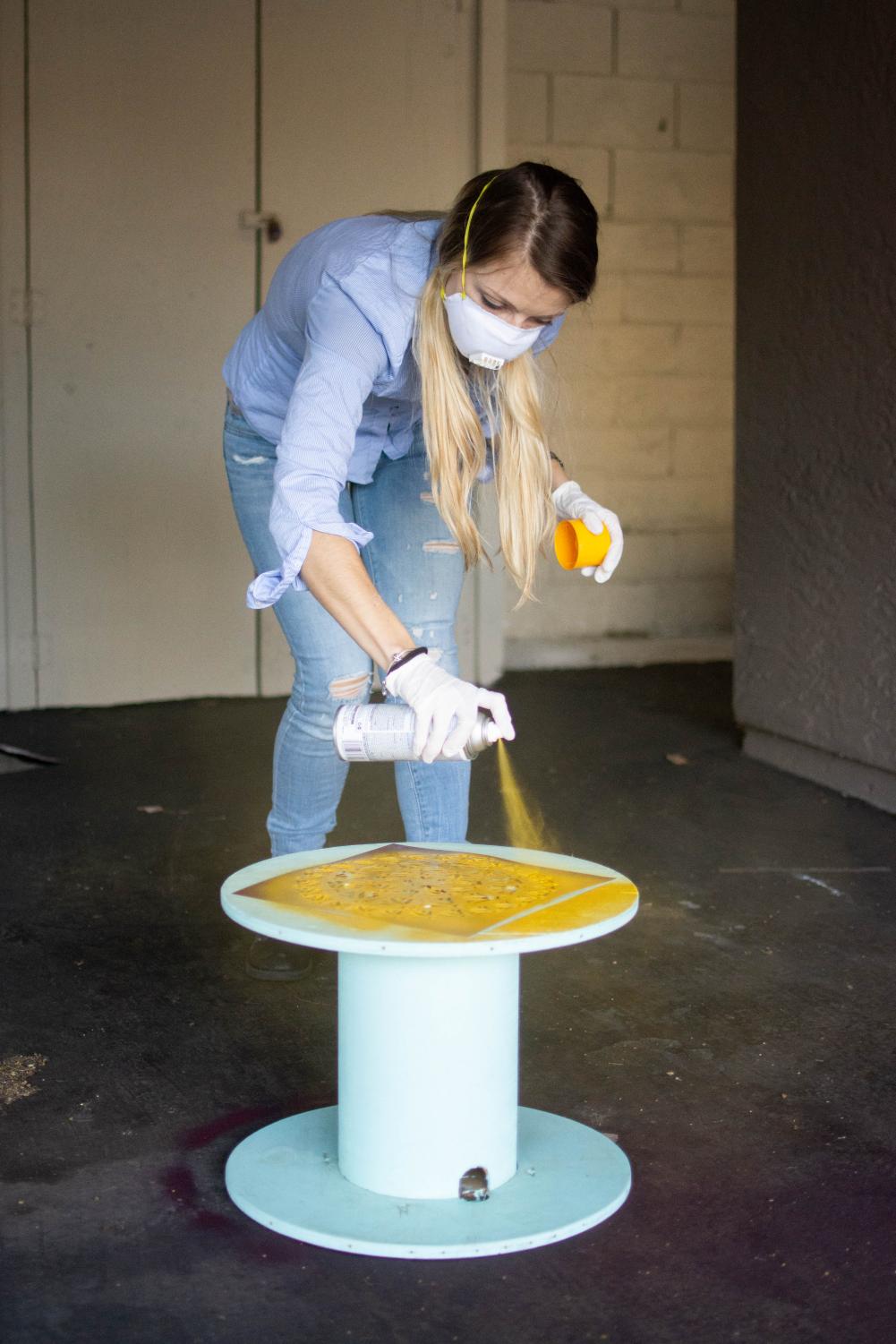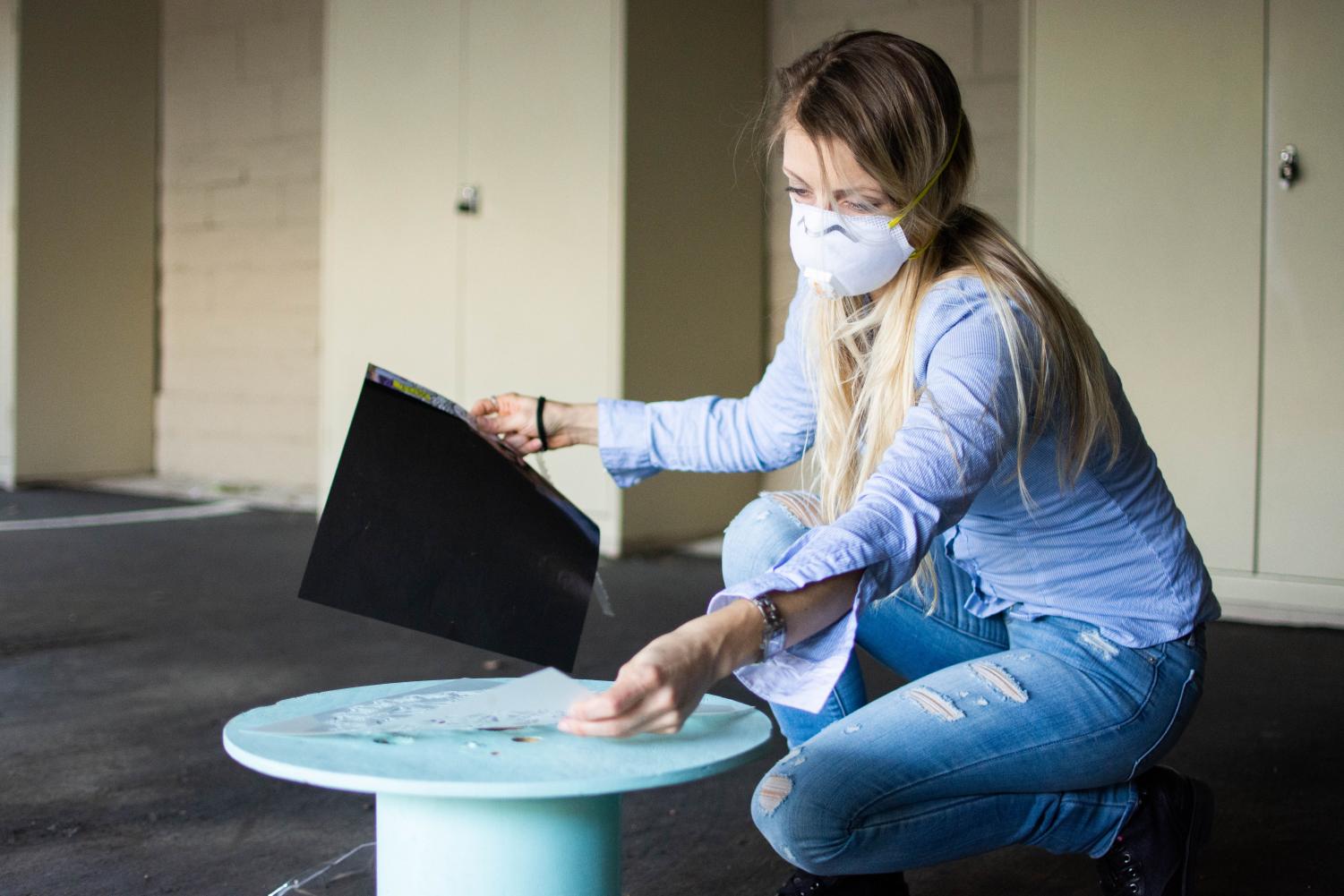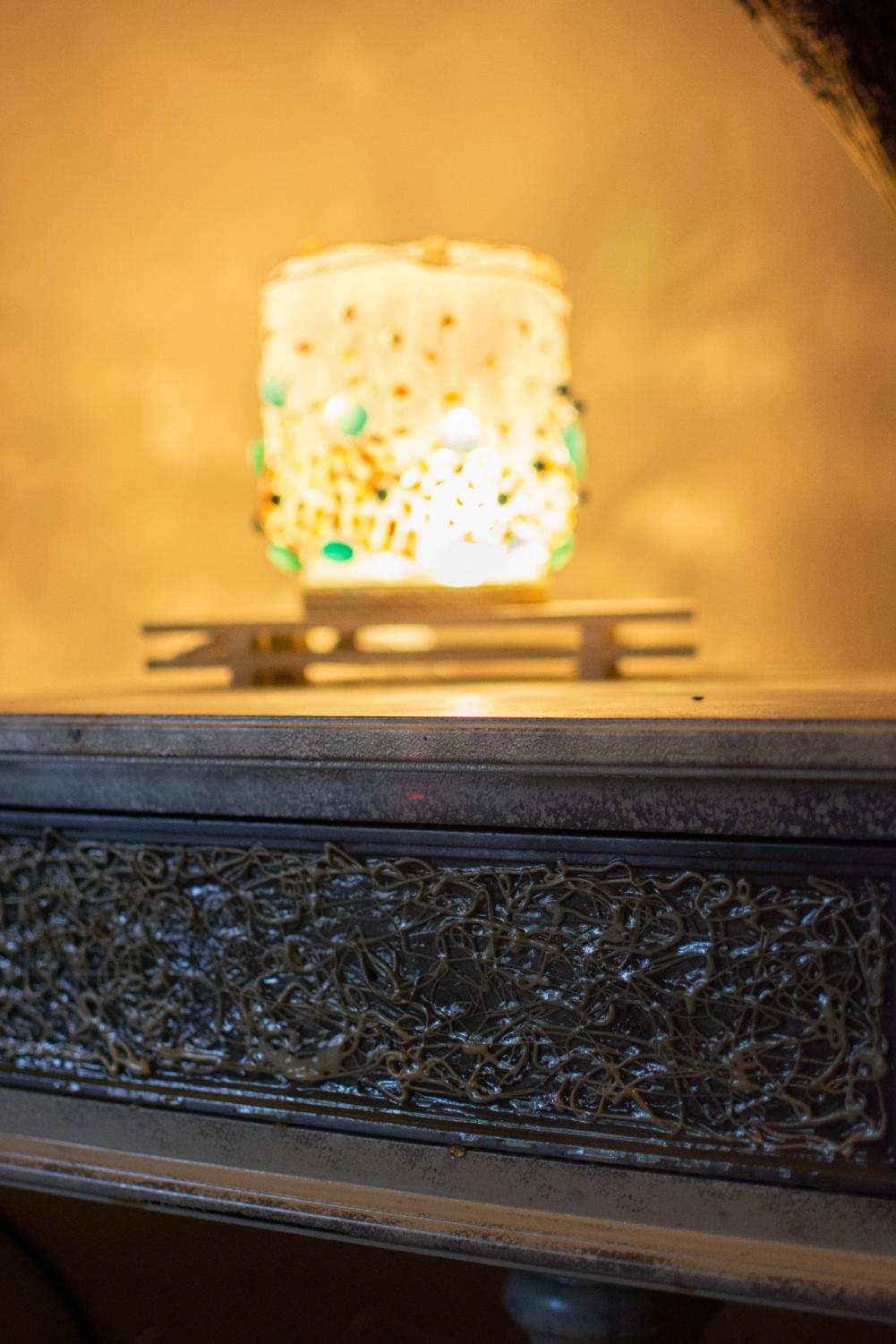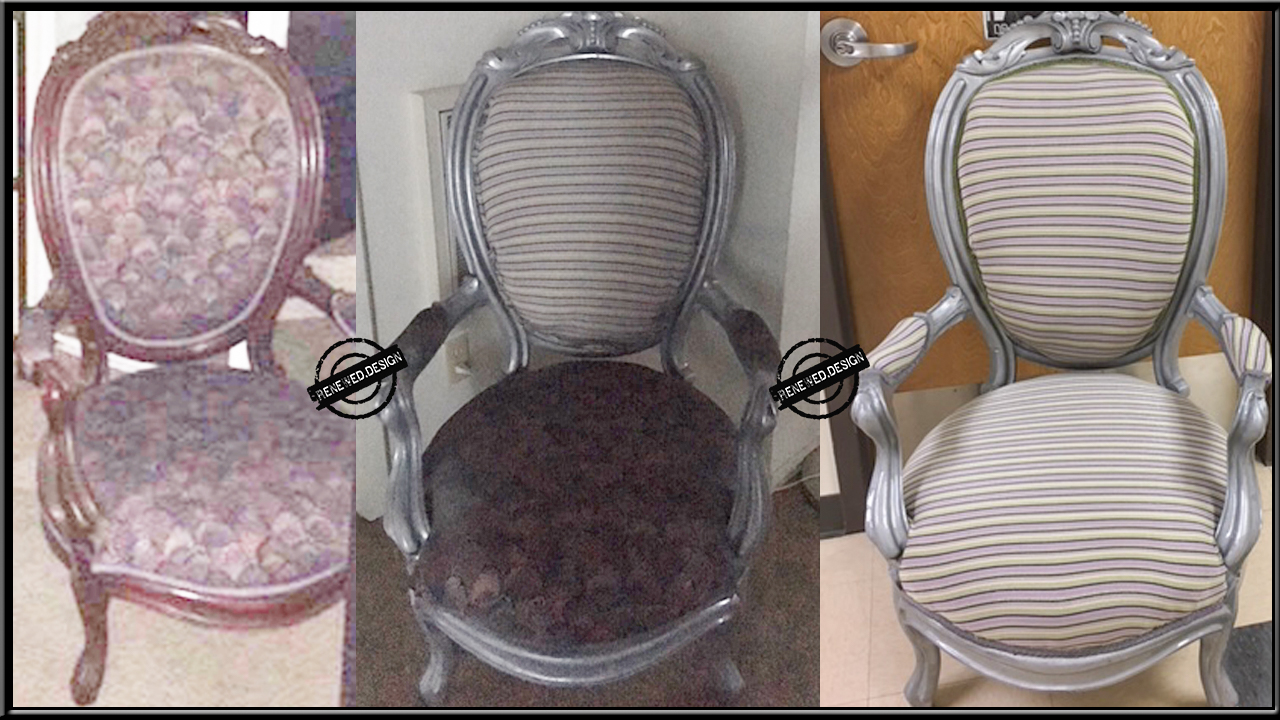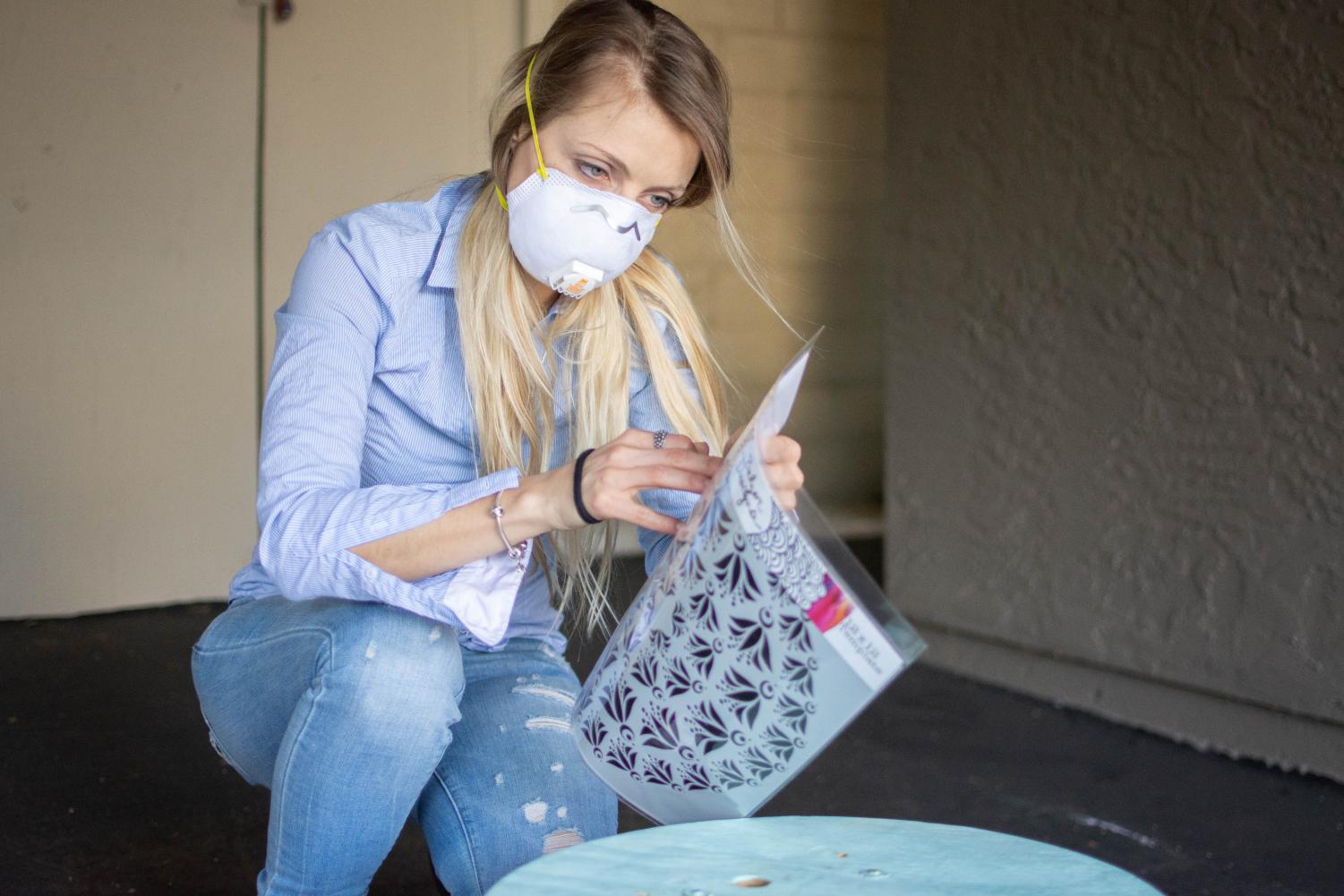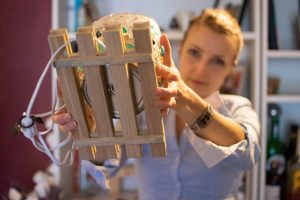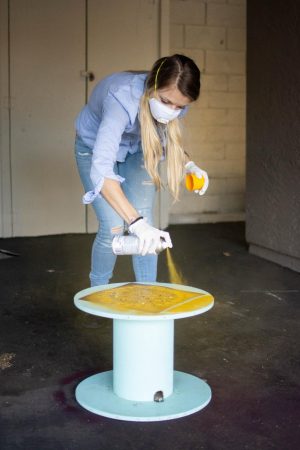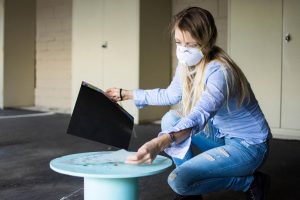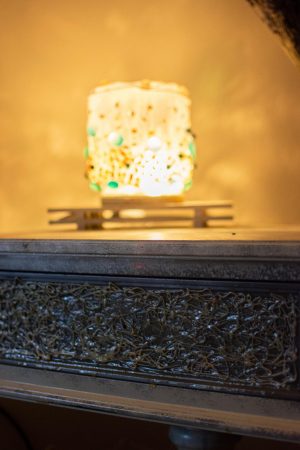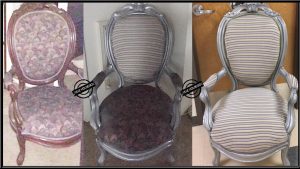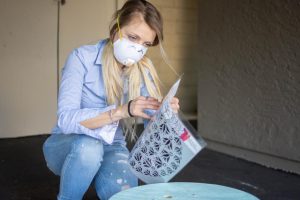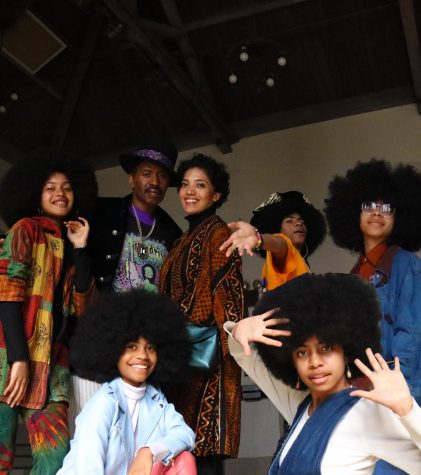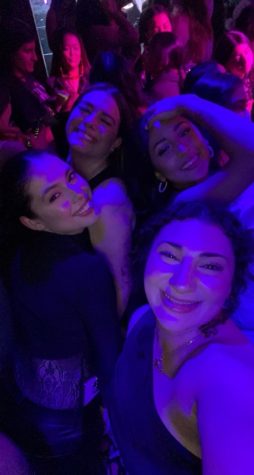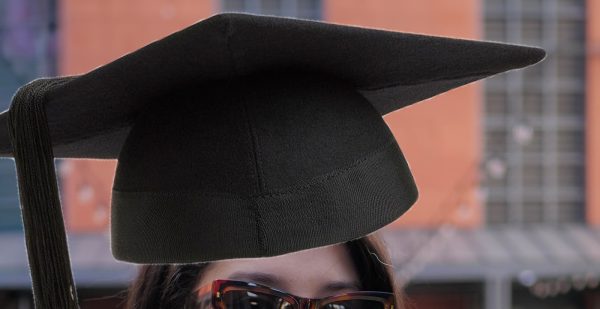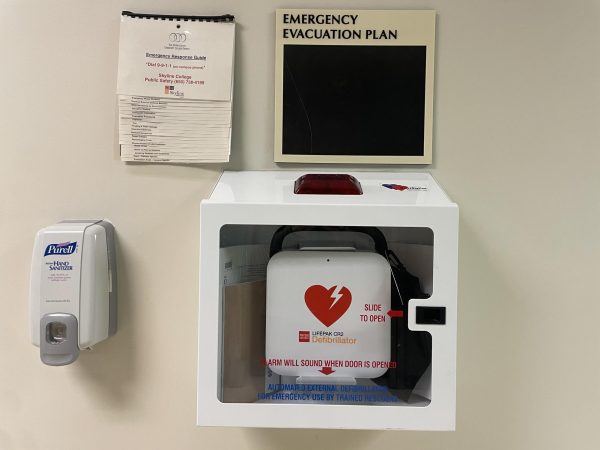Another person’s treasure
The sun begins to set as a young woman drives through the streets of The City. In her car, there’s usually a piece of used furniture: a table, lamp or dresser that is still mainly in good condition. During the day, she searches the streets and then determines where to go next. There are so many ideas in mind for a broken down table; it can be turned into a chair, a combination lamp and desk or something else. In her mind, making furniture is freedom.
Pent-up creativity
Martina Fazlic came to America after living in England for a while. Three years ago, she was urged by a friend to do something that made her happy since she has an architecture degree in interior design and used to have her own business back in Italy.
In her home country, she explained that the culture was different because of the opportunities offered.
“In my old country, my business was there but it wasn’t good for young people there because Italy likes the old (traditional) style,” Fazlic explained.
Her passion for reworking furniture to promote the use and buying of eco-friendly furniture all began with a table that she once found on the street.
“I saw a lot on my time in San Francisco, a lot of furniture, and I missed my old job so I saw this table and I wanted to see it, so I separated it (the pieces),” Fazlic said.
She saw an idea of what the table could become. A woman passing by saw what she was doing as she was revamping the table outside of her apartment and asked if she could buy the table from her.
Of course, Fazlic agreed.
She then decided to close her interior design business and moved on to repurposing furniture. With her degree, she yearned for more to do.
Keeping the history alive
One person who helped Fazlic get her idea started was Lavinia Zanassi, a professor and counselor for career services at Skyline College. She and the professor met unknowingly at a local manicure salon. But one day when Fazlic recognized Zanassi on campus, their conversation turned to finding a way to take the idea of repurposing furniture and make it into a business. This helped turn Fazlic on to the business classes offered at Skyline College.
Zanassi acknowledged that Fazlic knows how to take things and repurpose them as “a reconnection to the past.”
Clients trust her enough to repurpose the pieces and to still keep the history of it.
Sometimes people give Fazlic antique furniture with the intention of having it refurbished and Falzic keeps in mind that these people are trying to honor their loved ones by keeping the furniture and redesigning it while still maintaining the style.
“With furniture or other things that are thrown away we can make something out of them,” Falzic stated. “There’s so much garbage, and we don’t think about the impact of throwing them away.”
Zanassi also recognized that Fazlic’s talents lie also as a critical thinker who can apply it to her work.
“I was impressed with her desire to think outside the box and to not be deterred by any kind of setback. If she knows that if a certain idea is not going to work this way, (she will say) ‘I got to tweak it and maybe look at it from a different perspective and I will see this through,” Zanassi said.
Fazlic’s father is a chef and has always created and cooked fine food. Growing up, Fazlic has always been a creative person, and with her architecture degree in interior design, she can design on a different level.
“She not only reuses and repurposes, she generates. And those are the two important, interesting things about her,” Zanassi said. “(She is) a real forward thinking personality where she thinks about where our garbage goes.”
Combining the business aspect
This is her last semester as a part of the business program. Currently, she is in the midst of creating a website and boutique.
Soledad McCarthy, an assistant professor of business who teaches entrepreneurship at Skyline, has had Fazlic in several classes.
“We’re pretty committed to entrepreneurship on campus,” McCarthy said. “It very much aligns with our Skyline promise and mission. When it came to developing Martina’s business plan, she discussed her passions and her ability to find furniture and recreate it to a functioning use.”
McCarthy was one of the first people that Fazlic talked to about her desire to redesign furniture.
McCarthy decided to encourage her by letting the student have a go at a vintage chair of hers that she wanted to be redone.
“I’ve seen some of her other projects … so I’m also one of those people that…value students’ creativity and to not give her much direction,” McCarthy said.
McCarthy explains that most students think business is too stifling and they don’t understand that business in the twenty-first century, “allows people autonomy and aims to disrupt”. She likes seeing students do all of those things.
“I have no expectations of what she was going to do, “McCarthy said. “Business is art and I love students who are especially creative.”
Zanassi agrees with this and states that she is able to use what she loves and turn it into an opportunity.
“I think for her, coming to America to see these opportunities that are available only feeds her desire to be marketing her own perspective,” Zanassi explained. “She would tell me, ‘You know it’s funny here, all I see is opportunity, it’s just that I need to make the right connections so that I can further those opportunities.’”
Another person’s trash is her treasure
One of Fazlic’s main goals is to buy as few supplies as possible because she wants to reuse things as best she can without creating waste.
“If I can only buy certain things like paint and other supplies to put the pieces together, then I am good,” Falzic said laughing.
She also kept mentioning that waste can be reused in order to make a difference of how much of it is produced by local including in California, where according to California Recycle, a government website, there are 5.2 million tons of landfill a year created within the state. There is also recyclable waste of 7.4 million tons of “disposal-related” materials, that can possibly be reused which makes the waste in total of 42.7 million tons disposed in 2016.
Fazlic thinks that taking recycled materials including furniture will help the Earth one piece at a time especially when waste or ‘trash’ can be turned into something useful.
The aspiring boutique owner likes to recycle because it has less damage and it gives her the opportunity to incorporate that part into redesigning furniture. Even though furniture donations come to her through friends, she drives through San Bruno, San Francisco, and other areas to see what residents have put in front of their house.
Due to limited space, she has to thoroughly think about where she can store her items and leave them.
Right now, she is working with Zanassi who is helping by looking for a storage space for her.
Living the dream
Fazlic not only makes furniture but also makes jewelry and dabbles in a few other hobbies. For her main job, she is an assistant manager for Villa Italia, a wine company, and at night, she works as a server.
She sees herself as an artist, as does Zanassi and McCarthy. What sets her apart is that she pursues her dreams a step further by turning it into a business venture and a lifestyle.
For example, her apartment is simple, neat and has character. The furniture she has is either used, repurposed or is from her home country that will soon be turned into art.
“You see, even if I finish a project, I still never am truly done with it,” Fazlic stated. “I’m always thinking of something and playing with the idea of it at least.”
Her living area consists of a partially finished desk, with a homemade lamp sitting on top of it. The lamp is made out of a food jar and decorated with sea glass that she carefully picked out from the beach and then glued on. Fazlic was inspired by the beach and wanted to use it in a way that keeps it natural.
Some projects were said to have taken only a week to complete. The lamp took longer than that.
Her projects tend to also be determined by the size of the furniture, which can be restraining.
Her “studio” is her vehicle parking place at her apartment building. Since it is open to the air, it is perfect for her to lay her projects on the cement of her parking spot and begin painting them.
Decorating and putting together furniture can be messy and has already damaged the inside of her apartment because of the paint and glue.
Inspirations
Her ideas come from everywhere. She has an idea and draws from that but does not stay close to that plan because her ideas change, especially if she does not like the way something looks when she is redesigning furniture. When it comes to painting a piece, she only does a light coat of paint first and lets it set so that she has wiggle room to change it if the color does not sit well with her.
“I know that I will change my mind eventually about something,” Fazlic said. “That is why I work quickly depending on what I’m putting on it, so I can take it off if I don’t like it.”
She explains that even though a piece in her home is “done” she will change it again if something inspires her.
“She has the eye to see a broken-down chair and to turn it into something fabulous,” McCarthy said. “She’s creative that way.”



